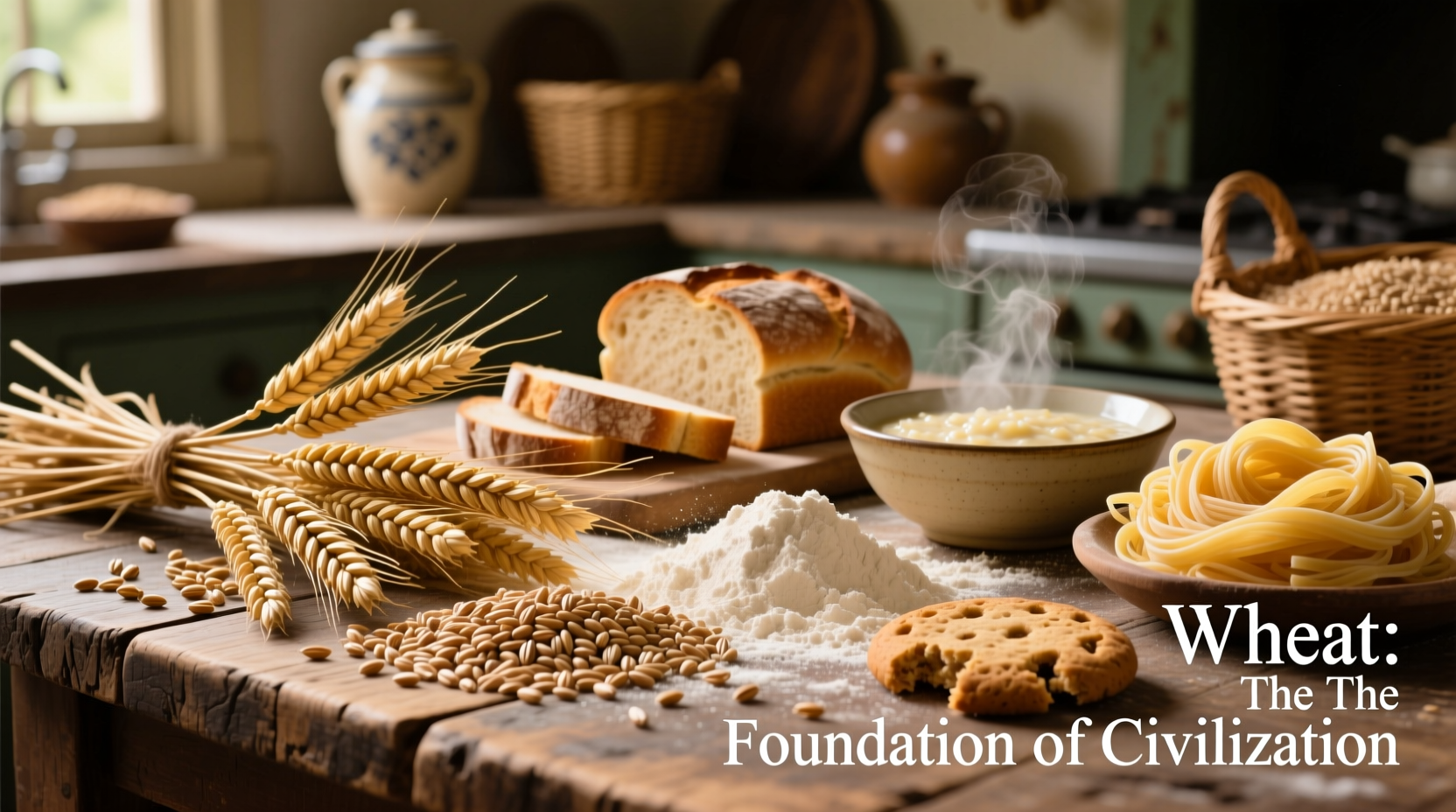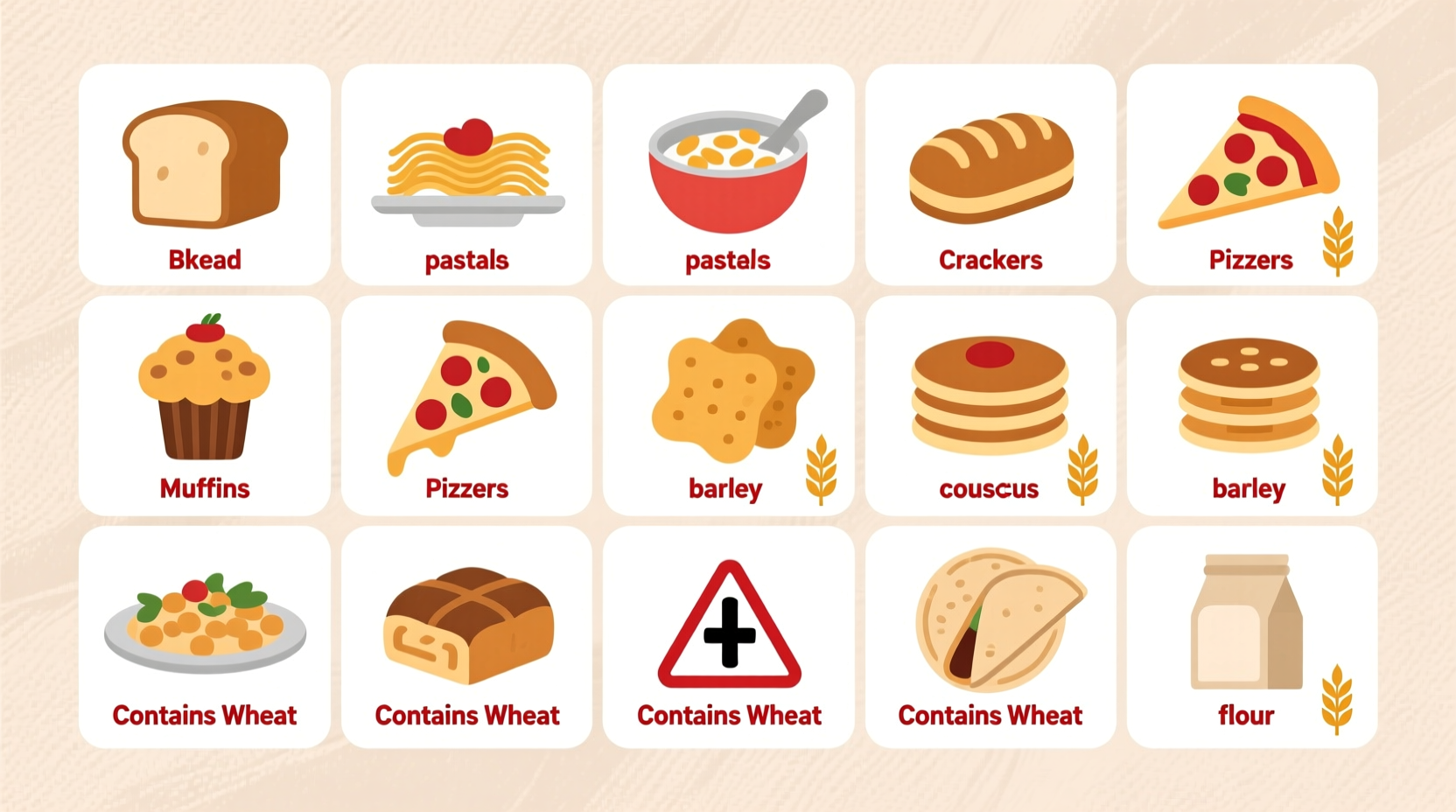Wheat is found in breads, pastas, cereals, baked goods, and many processed foods including sauces, soups, and even some condiments. Common hidden sources include soy sauce, imitation seafood, and certain processed meats. Always check ingredient labels for wheat, gluten, or derivatives like seitan, vital wheat gluten, and hydrolyzed wheat protein.
Discovering which foods contain wheat is essential for those managing celiac disease, wheat allergies, or non-celiac gluten sensitivity. With wheat appearing in unexpected places beyond obvious baked goods, understanding both direct and hidden sources can prevent adverse reactions and support healthier dietary choices.
Understanding Wheat in Everyday Foods
Wheat remains one of the most common food allergens while also being a staple ingredient in numerous food products worldwide. Whether you're newly diagnosed with a wheat-related condition or simply exploring dietary modifications, recognizing wheat-containing foods helps you make informed choices. This guide provides a comprehensive overview of where wheat appears in your diet, including both obvious and surprising sources.
Common Foods That Always Contain Wheat
Certain food categories inherently contain wheat as a primary ingredient. These items should be avoided completely if you need to eliminate wheat from your diet:
- Bread (white, whole wheat, sourdough, bagels, rolls)
- Pasta (including couscous and semolina-based products)
- Cereals (most breakfast cereals unless specifically labeled wheat-free)
- Flour-based baked goods (cakes, cookies, muffins, pies)
- Crackers and crispbreads
- Flour tortillas
- Wheat-based noodles (udon, ramen, soba*)
- Seitan (wheat gluten)
*Note: Traditional soba noodles contain wheat, though 100% buckwheat soba is available
Hidden Sources of Wheat in Processed Foods
Wheat often appears in unexpected products where you might not anticipate finding it. Food manufacturers use wheat derivatives for texture, binding, and flavor enhancement. The U.S. Food and Drug Administration requires wheat to be clearly labeled as a major allergen, but understanding terminology helps identify wheat even in international products.
| Food Category | Common Wheat-Containing Products | Wheat Derivatives to Watch For |
|---|---|---|
| Condiments & Sauces | Soy sauce, teriyaki sauce, hoisin sauce, salad dressings, gravy mixes | Modified food starch, hydrolyzed vegetable protein, malt flavoring |
| Processed Meats | Hot dogs, sausages, meatloaf, burgers, deli meats | Breadcrumbs, wheat flour, vital wheat gluten |
| Snack Foods | Flavored chips, pretzels, crackers, snack bars | Malt extract, wheat bran, wheat germ |
| Ready Meals | Soups, stews, frozen dinners, pizza | Wheat protein, wheat starch, textured vegetable protein |
Reading Labels for Wheat Ingredients
Since the Food Allergen Labeling and Consumer Protection Act took effect, wheat must be clearly identified on food labels in the United States. Look for:
- "Contains: Wheat" statement following the ingredient list
- Wheat listed in parentheses after an ingredient (e.g., "natural flavor (wheat)")
- Common wheat derivatives in the ingredient list
Be aware that terms like "gluten-free" don't automatically mean wheat-free, as products could contain other gluten-free grains while still including wheat derivatives. Always read labels carefully, as formulations can change.

Special Considerations for Wheat Avoidance
Cross-contamination presents a significant concern for those with celiac disease or severe wheat allergies. The Celiac Disease Foundation emphasizes that even trace amounts of wheat can trigger reactions in sensitive individuals. Consider these important factors:
- Shared equipment: Products made in facilities that also process wheat may contain traces
- Oats: Often contaminated with wheat during growing or processing; choose certified gluten-free oats
- Non-food items: Some medications, vitamins, and even playdough contain wheat
- Restaurant dining: Risk of cross-contamination is high; communicate clearly with staff
For those with celiac disease, the Celiac Disease Foundation recommends seeking products with certified gluten-free labeling, which ensures rigorous testing for wheat contamination.
Wheat-Free Alternatives for Common Foods
Eliminating wheat doesn't mean sacrificing variety in your diet. Numerous alternatives exist for common wheat-containing foods:
- Bread alternatives: 100% corn tortillas, rice cakes, lettuce wraps, or bread made from almond flour, coconut flour, or gluten-free grain blends
- Pasta substitutes: Rice noodles, quinoa pasta, chickpea pasta, zucchini noodles ("zoodles")
- Baking flour: Almond flour, coconut flour, rice flour, or commercial gluten-free flour blends
- Thickeners: Cornstarch, arrowroot, or tapioca instead of wheat flour
When substituting, remember that different flours behave differently in recipes. You may need to adjust liquid ratios or use binding agents like xanthan gum to achieve similar textures.
When Wheat Isn't the Issue: Understanding Gluten vs. Wheat
It's important to distinguish between wheat allergies, celiac disease, and non-celiac gluten sensitivity. While wheat contains gluten, not all wheat-related conditions involve gluten:
- Wheat allergy: Immune reaction to proteins in wheat (not necessarily gluten)
- Celiac disease: Autoimmune disorder triggered specifically by gluten (found in wheat, barley, and rye)
- Non-celiac gluten sensitivity: Symptoms improve when gluten is removed, without autoimmune or allergic mechanisms
If you suspect a wheat-related condition, consult a healthcare provider for proper diagnosis before making significant dietary changes.
Practical Tips for Managing a Wheat-Free Diet
Successfully navigating a wheat-free lifestyle requires planning and awareness. Implement these practical strategies:
- Always carry safe snacks when traveling or attending events
- Learn to identify international wheat terms when traveling abroad
- Join support groups through organizations like the Celiac Disease Foundation
- Work with a registered dietitian specializing in food allergies
- Keep emergency medication accessible if you have a wheat allergy
Remember that wheat elimination should be medically necessary. The National Institutes of Health notes that unnecessarily restricting wheat can lead to nutrient deficiencies if not properly managed.











 浙公网安备
33010002000092号
浙公网安备
33010002000092号 浙B2-20120091-4
浙B2-20120091-4